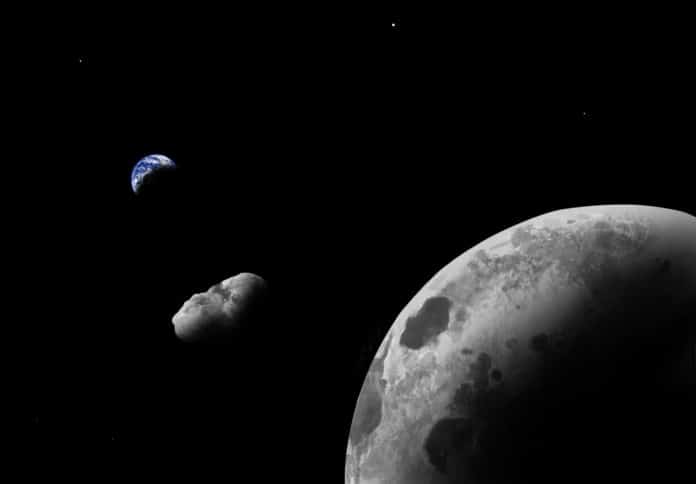Earth quasi-satellites are a class of near-Earth small solar system bodies that orbit the sun but remain close to the Earth. However, there is not enough data about these Earth quasi-satellites as they are faint and difficult to observe.
Recently, using a Large Binocular Telescope (LBT) and the Lowell Discovery Telescope (LDT), a team of Arizona-led researchers has discovered one such near-earth asteroid called Kamo’oalewa. According to scientists, this recently discovered near-earth asteroid might be a miniature moon, i.e., a fragment of our moon.
This quasi-satellite was initially discovered in 2016 via the PanSTARRS telescope in Hawaii. It is roughly the size of a Ferris wheel – between 150 and 190 feet in diameter – and gets as close as about 9 million miles from Earth.
The asteroid Kamo’oalewa can be observed from Earth for a few weeks in April only: because of its orbit. As it has a small size, subsequently, it can be observed via large telescopes only.
This discovery was made using the asteroid’s pattern of reflected light, called a spectrum. Its spectrum matches lunar rocks from NASA’s Apollo missions, suggesting it originated from the moon.
However, it remains elusive how the asteroid may have broken loose from the moon. That’s partly because there are no other known asteroids with lunar origins.
Arizona planetary sciences graduate student Ben Sharkey said, “I looked through every near-Earth asteroid spectrum we had access to, and nothing matched.”
Arizona associate professor of lunar and planetary sciences Vishnu Reddy, led to another three years of hunting for a plausible explanation said, “Sharkey and I debated over its origins.”
“We doubted ourselves to death. After missing the chance to observe the asteroid in April 2020 due to a COVID-19 shutdown of the Large Binocular Telescope, the team found the final piece of the puzzle in 2021.”
“This spring, we got much-needed follow-up observations and went, ‘Wow, it is real.’ It’s easier to explain with the moon than other ideas.”
Study co-author Renu Malhotra, an Arizona planetary sciences professor who led the orbit analysis portion of the study, said, “Kamo’oalewa’s orbit is another clue to its lunar origins. Its orbit is similar to the Earth’s, but with the slightest tilt. Its orbit is also not typical of near-Earth asteroids.”
“It is very unlikely that a garden-variety near-Earth asteroid would spontaneously move into a quasi-satellite orbit like Kamo’oalewa’s. It will not remain in this particular orbit for very long, only about 300 years in the future, and we estimate that it arrived in this orbit about 500 years ago.”
Study co-author Al Conrad, a staff scientist for the telescope, said, “These challenging observations were enabled by the immense light-gathering power of the twin 8.4-meter telescopes of the Large Binocular Telescope.”
Journal Reference:
- Sharkey, B.N.L., Reddy, V., Malhotra, R. et al. Lunar-like silicate material forms the Earth quasi-satellite (469219) 2016 HO3 Kamoʻoalewa. Commun Earth Environ 2, 231 (2021). DOI: 10.1038/s43247-021-00303-7
